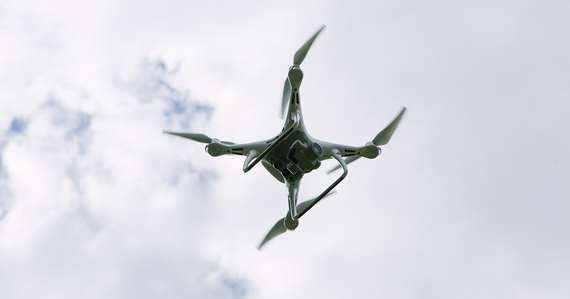Drones over populated areas will be allowed to launch at a height of up to 150 meters
[ad_1]

The launch of drones over populated areas from March next year will be allowed at an altitude of up to 150 m, but only in the direct line of sight of the pilot and outside the restricted areas. Decree Russian Prime Minister Mikhail Mishustin signed this and other changes to the federal rules for the use of airspace, informed Ministry of Transport.
“According to the updated rules, it is allowed to launch drones over populated areas at a height of up to 150 meters from the ground or a body of water during daylight hours. At the same time, the drone must be in direct line of sight of the remote pilot and outside the restricted areas,” the report says.
The Ministry of Transport will have to determine these zones on the proposal of regional and local authorities. At the same time, for flights of drones weighing up to 30 kg, the aviation authorities will not need a relocation plan.
The changes also simplify the use of drones in agriculture: they can be launched at altitudes of less than 30 m from the ground or water, more than 5 km from airfield control points and 2 km from landing sites without short-term airspace restrictions.
In addition, it will be possible to send a drone flight plan through a digital platform for providing activities for the use of airspace, obtaining the promptly necessary information for the flight.
The document developed by the Ministry of Transport and the Federal Air Transport Agency will come into force on March 1, 2024.
Most of the regions of Russia introduced a ban on the use of drones in the fall of 2022, when Russian President Vladimir Putin signed a decree establishing different levels of response in the subjects – from the level of basic readiness to martial law. An exception was made for public authorities and law enforcement agencies.
Several other entities imposed a similar ban amid a drone attack by the Kremlin from Ukraine in early May. In particular, restrictions began to operate in Moscow and the Moscow region.
Earlier today, the government approved a strategy for the development of unmanned aircraft until 2030 and for the future until 2035. The strategy is built on five key areas. The first includes stimulating demand for domestic unmanned aerial systems (UAS), the second is the development and mass production of such systems. In the third direction of the strategy, we are talking about the development of infrastructure, and in the fourth – about training personnel for unmanned aircraft. The fifth direction of the strategy involves fundamental and promising research in the field of ALS.
[ad_2]
Source link





